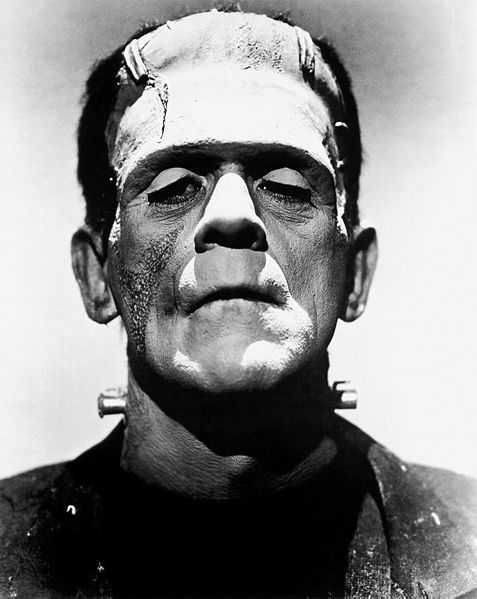In honor of Halloween, I decided to write about the history of a Halloween icon — Frankenstein’s monster. Most everyone is familiar with Frankenstein, as he is featured heavily in pop culture and media nowadays, especially during this time of the year. But where did this creepy creature come from? Frankenstein’s Monster has undergone a considerable change from its inception to the contemporary figure. Let’s take a look at how the Monster evolved to the Frankenstein we know and love today.
Frankenstein the Novel
In 1818, English author Mary Shelley published the novel “Frankenstein” about a mad scientist named Victor Frankenstein who creates the Monster in a terrible science experiment with the goal of “bestowing animation upon lifeless matter.” This has led to people mistakenly referring to the Monster as Frankenstein, when that name actually belongs to the creator. The novel came about from a parlor game in which Mary, her future husband/poet Percy Bysshe Shelly, and poet Lord Byron competed to see who could write the best horror story. The idea for Frankenstein came to Mary Shelley in a nightmare and a few years later, Frankenstein was born. It is theorized that Shelley drew inspiration from Frankenstein’s Castle, located in southern Hesse, Germany, as Shelley was traveling through the region before she wrote her novel. And the rest is history, Frankenstein was a spectacular success and spawned an entire genre of horror stories, films, and plays. The novel has also made its way into high school English classrooms all over the world, which is where I first encountered it. Compared to contemporary adaptations, the original version of the Monster is quite eloquent. Speaking to his creator, Victor Frankenstein, the Monster says “I ought to be thy Adam, but I am rather the fallen angel”.
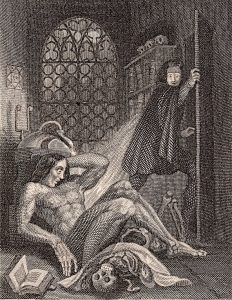
Frankenstein the Movie Star
Frankenstein made its cinematic debut in 1931 with Boris Karloff starring as the Monster. There have been scores of film and television adaptations on Frankenstein since then. In 1935, Karloff reprised his signature role in “The Bride of Frankenstein”, incorporating a love interest into the story for the tragic Creature. In 1974, “Young Frankenstein“, starring Peter Boyle, Gene Wilder, and Mel Brooks hit the silver screen in a hilarious spoof of the original Gothic tale. In 2012, Tim Burton’s “Frankenweenie” had an adorable take on the classic story. In this version, Victor Frankenstein is a young boy who conducts an experiment to revive his beloved Sparky, a Bull Terrier who was struck by a car and killed.
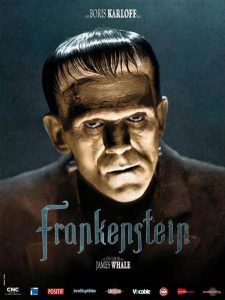
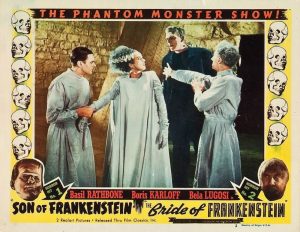
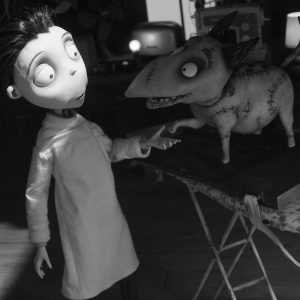
Frankenstein the Cereal?
Beyond film and television adaptions, Frankenstein’s Monster has made its way into pop culture and consumerism. Frankenstein’s image is plastered on all kinds of products from clothing to cereal. That’s right, everyone’s favorite re-animated corpse is a cereal mascot. General Mills produces a line of monster breakfast cereals seasonally including Count Chocula, Boo Berry and Franken Berry. Franken Berry is a strawberry flavored frosted cereal with marshmallows which was introduced in 1971. Every autumn you can snag these monster cereals at your local grocery store for a limited time release.
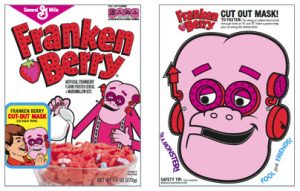
As you can see, Frankenstein’s Monster has made its way into many different avenues since its original inception in 1818. All of these varied adaptations are different ways to interpret the classic product. Mary Shelley is known as the “mother of the horror genre” for inspiring so many people around the world. One reason that Frankenstein has retained its popularity is because it explores themes that are still relevant today. “Frankenstein reflects the deeply felt concerns of an age conflicted over religion and science. The novel explores the boundary between life and death, and the potential dangers human arrogance might arouse when trying to play God.”
What is your favorite interpretation of Frankenstein’s monster? Please share in the comments!

